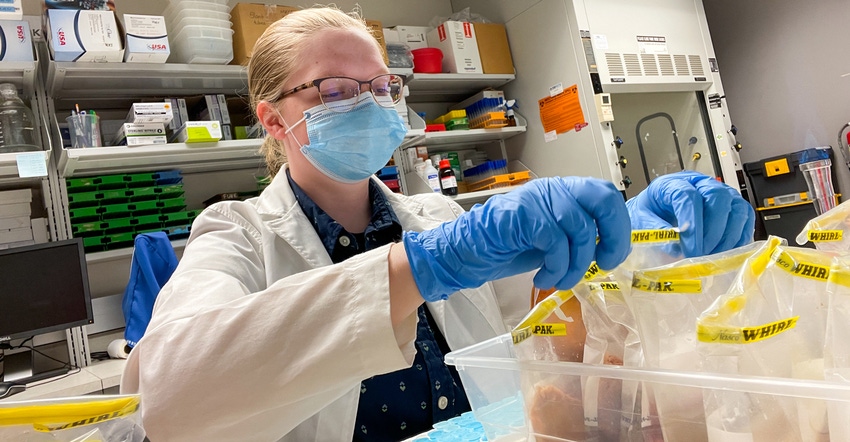December 8, 2021

Ohio State University is stepping forward to battle antibiotic resistance and help prevent the next global health crisis. Collaborating with a “one health” approach, researchers at five of Ohio State University’s colleges are looking at the issue with a human, animal and environmental health perspective.
Bacterial infections that would typically be treated with antibiotics are becoming more resistant to treatment, and as bacteria evolve faster than new treatments can be developed, it could present life-threatening illness.
OSU researchers say a key contributor to the global issue of antimicrobial resistance has been the long history of overprescribing antibiotics for human and animal viral illnesses that they’re ineffective in treating.
Ohio State’s antimicrobial stewardship program educates health care workers, veterinarians, students and patients on the appropriate and best use of antibiotics among people and animals. Experts from the Ohio State University Wexner Medical Center are working with colleagues in Medicine, Veterinary Medicine, Pharmacy, Public Health and Food, and Agricultural and Environmental Sciences through Ohio State’s Infectious Diseases Institute to reduce antibiotic resistance.
The United Nations Food and Agriculture Organization has designated Ohio State’s IDI as one of eight International Reference Centers worldwide for antimicrobial resistance.
ASP works closely with clinicians on guidelines, policies and formulary recommendations to identify the best antimicrobial treatment for infections while ensuring appropriate use considering cost, toxicity and concern for resistance development.
“The more you show your cards to the bacteria, the easier it is for them to practice getting around that drug,” says Erica Reed, the lead specialty practice pharmacist in infectious diseases at the Ohio State Wexner Medical Center. “We’re already seeing patients with life-threatening infections that we have very few effective drugs left to treat.”
How antibiotic-resistant bacteria spread
Ohio State researchers are examining the many ways antibiotic-resistant bacteria can spread, whether it’s between people and animals or through waterways to livestock that may then infect the food supply.
A discovery nearly a decade ago by Ohio State veterinary researchers led to changes in disinfection practices worldwide in environments ranging from hospital rooms to pig farms. The researchers identified microbes that, after becoming tolerant to specific disinfectants, would automatically become resistant to a wide range of antibiotics.
“Whether it’s in the rivers, the wastewater treatment plant, the veterinary clinic or the medical center, all play a role in the problem, and all have potential contributions to the solution,” says Thomas Wittum, a professor and chair of the Department of Veterinary Preventive Medicine.
In 2018, the College of Veterinary Medicine started its own comprehensive antimicrobial stewardship program to help veterinarians and students confidently make judicious antimicrobial-use decisions while providing the best care for their animal patients. Next, experts hope to modify the program to apply it in private veterinary practices around the state.
The COVID-19 pandemic highlighted the importance of managing infections properly, says Reed, who sees the need for stewardship networks among global partners to help prevent dangerous future infections.
Source: OSU, College of Veterinary Medicine, which is solely responsible for the information provided and is wholly owned by the source. Informa Business Media and all its subsidiaries are not responsible for any of the content contained in this information asset.
You May Also Like




